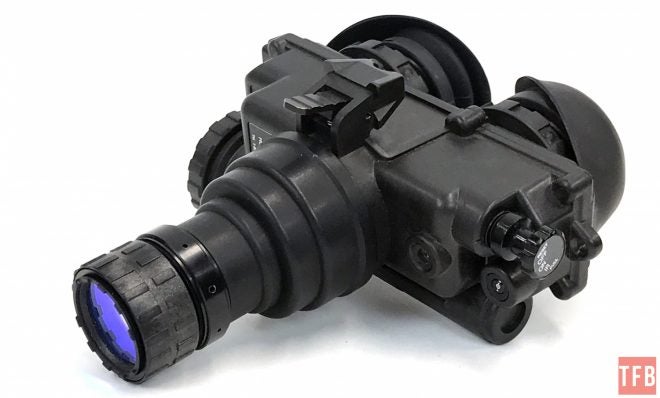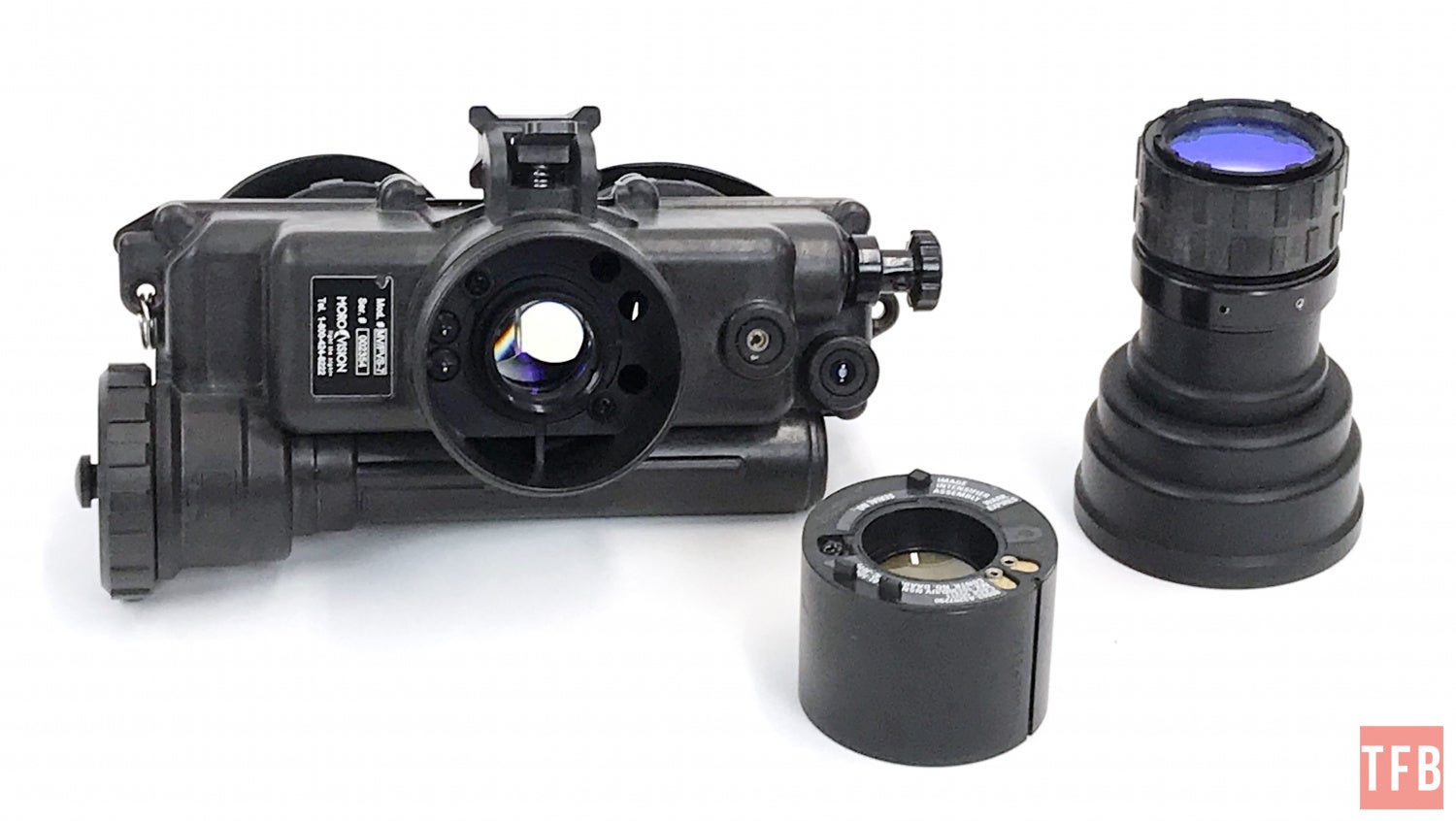So you are stuck at home due to self-quarantine, shelter in place, introvert’s heaven or whatever you call it. And now Trump has put some stimulus Coronabux in your bank account and you are itching to spend it on some sweet night vision. If you are single and received the maximum allotment then you have $1,200 burning a hole in your pocket and you want to convert it into some green phosphor. (You can’t afford white phosphor with so little cash). Well, a used PVS-7 would certainly be in your budget but I would not recommend it and here is why.
Why The PVS-7 Sucks
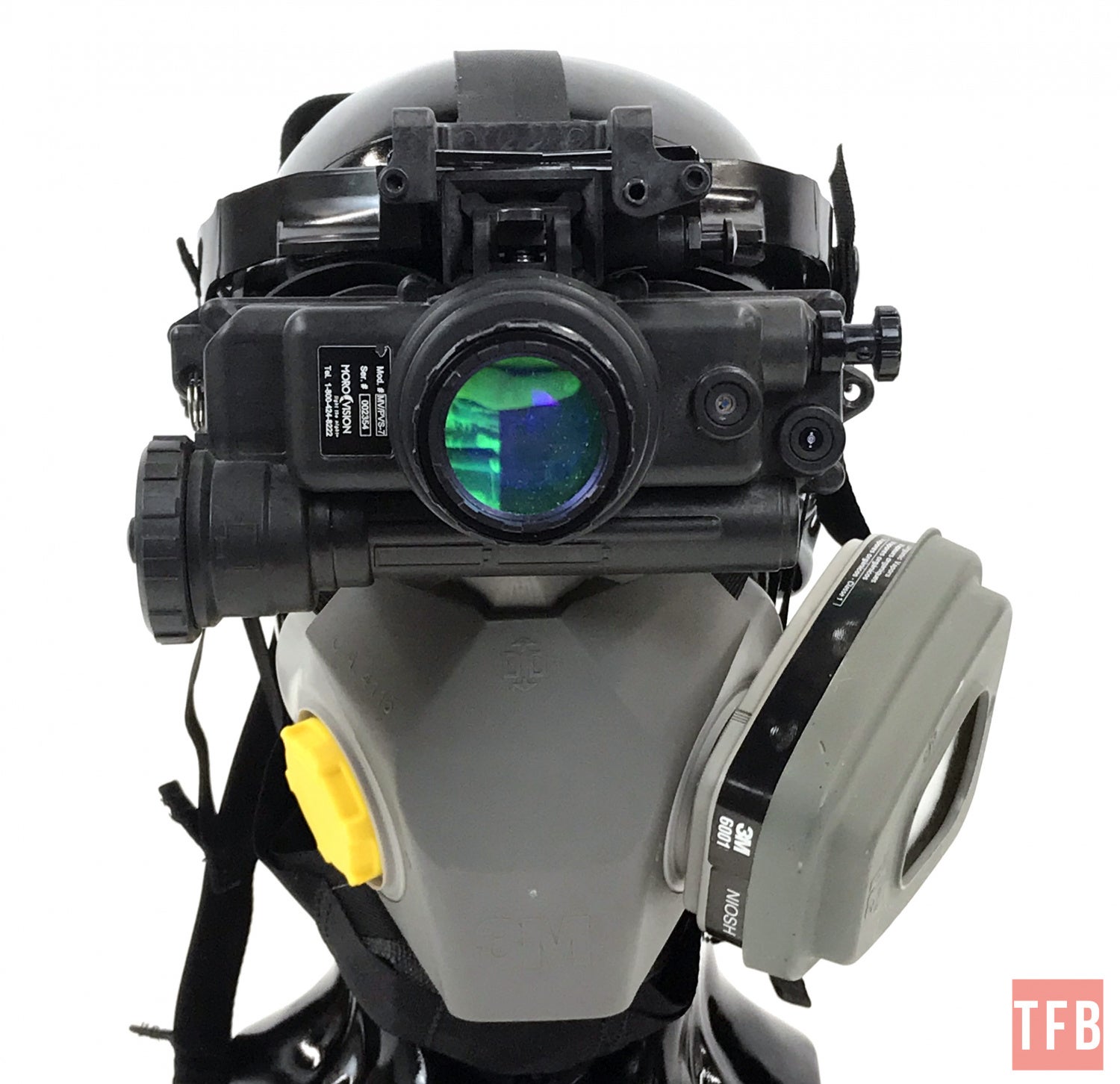
We Have Two Eyes For A Reason
The PVS-7 was used by the military back in the 90s when we fought the Gulf War. So the technology is obsolete. It was promptly replaced by the PVS-14. Why did the military do away with the PVS-7? Monocular or binocular vision is better than Biocular vision.
It is simple fact of how our eyes and brain work to process images so we can safely interact with the world in a 3-dimensional space. Augee Kim of TNVC posted this on social media.
BNVGs provide stereoscopic cues such as binocular disparity, illustrated above. Simply put, your two eyes provide slightly different angles of objects that you observe in three-dimensional space. Based on the amount of disparity between the two angles on an object, your brain can then unconsciously judge the distance from you to a given object or obstacle with a fairly high degree of accuracy, especially if you are familiar with the object or type of object (e.g., a couch or a coffee table) and its nominal dimensions—or if there are other familiar objects around it (e.g., tree trunks). The greater the disparity, the closer the object/obstacle. Moreover these cues are not dependent on objects/obstacles being in focus.
• • •
With a monocular, depending on the amount of ambient light, you can get a degraded version of these stereoscopic cues using information from your unaided eye. On the other hand, *biocular* devices like the AN/PVS-7 CANNOT provide binocular disparity, however they “trick” your brain into thinking you still have stereoscopic vision, making you “feel” more comfortable, simultaneously making you more confident, but less able to accurately judge distances.
• • •
Collimation is also important, as less shift in the images means both better depth perception as well as reduced fatigue to the wearer. Collimated binocular > bridged monoculars > monocular > biocular.
It is a simple matter of depth perception and a biocular system like the PVS-7 does not allow you to gauge distances. It is like closing one eye and trying to reach for objects with only one eye. But instead, you have the exact same image displayed into both eyes. While one-eyed people are not known for stumbling around, that is because our brains are elastic and can learn to adapt. I’m sure with enough time under PVS-7 you might be able to learn to process the image, it is just not worth all the time and effort.
Aiming With The PVS-7
Aiming with a biocular night vision system is not great. There are some systems that make this a bit easier like the SIMRAD GN1 which has an offset objective lens that could work with an optic so you can shoot passive. Even the Thales Lucie is a biocular design and has an offset. Also, the French Army is adopting the latest Thales O-Nyx, an updated Lucie. That kind of tells you they don’t know what they are doing. Biocular goggles for their military? There are not enough facepalms or hanging head shakes for this.
Since the objective lens of the PVS-7 is in the middle between both of your eyes, it makes aiming passively more challenging. With a tall optic mount, you can make it work. You need to roll the gun over to get the optic into field of view of the objective lens.

This is approximately the correct optic position to aim passively if I was using BNVGs or a monocular like a PVS-14.
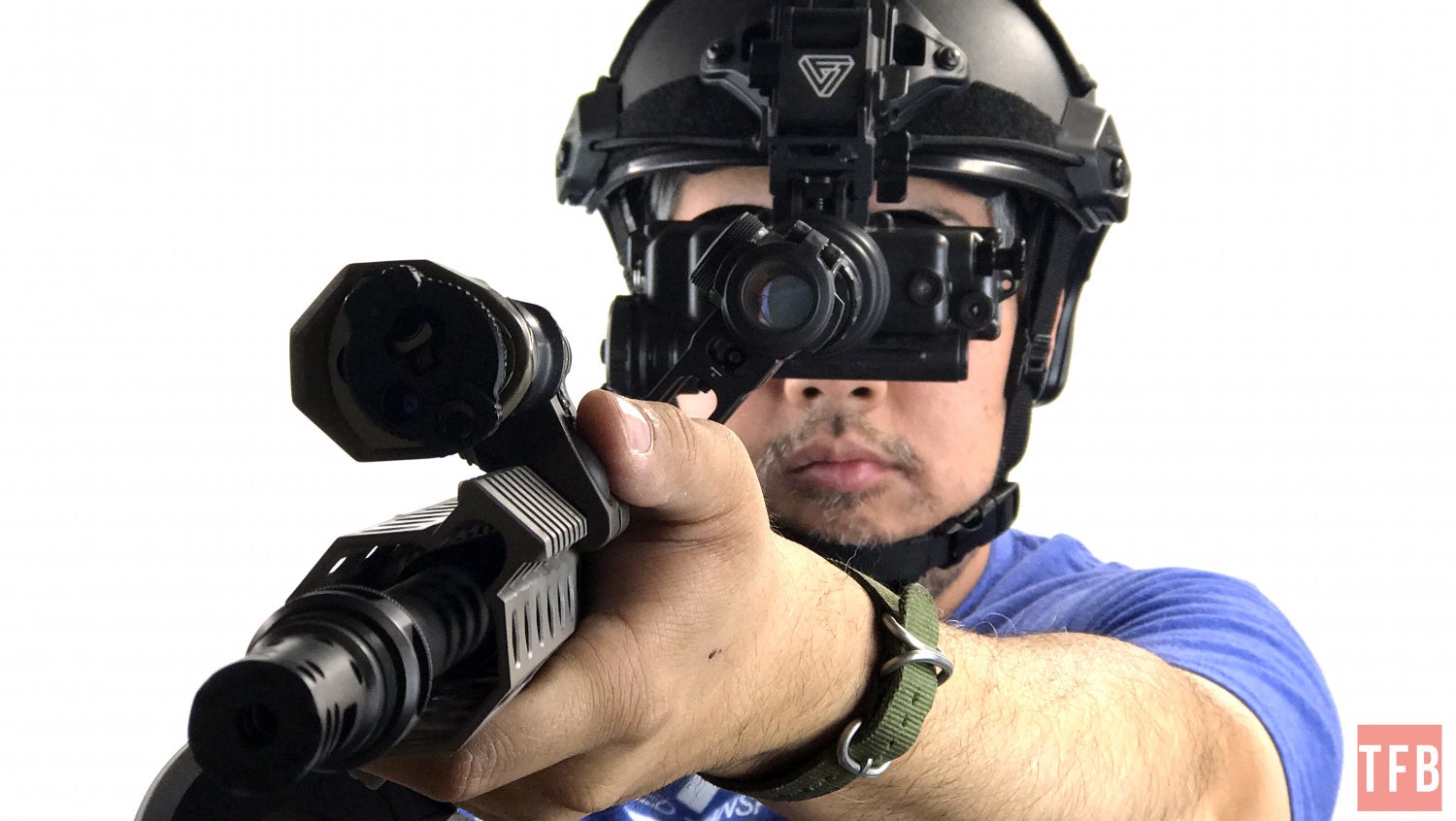
In order for me to aim through the optic, I have to roll the optic over by about 45°
If the optic was a normal lower 1/3 cowitness or absolute cowitness, you would not be able to see through the optic with a PVS-7. Rolling the gun over is similar to running an offset RDS but instead you are trying to aim with your primary optic.

PVS-7s Are Not Ruggedized
Here is the biggest detractor of the PVS-7. They are fragile when compared to a PVS-14. The body housing contains all the electronics and wires for the PVS-7. Molded to this housing is the bayonet horn. This is the part that plugs into the mount on your helmet. If it breaks, which it can if you hit the PVS-7 when you fall or drop them, it cannot be replaced. A PVS-14 has a threaded hole so the arm is a sacrificial part that would take the abuse. The PVS-7 housing would take all the abuse. So if the bayonet below breaks off you have to replace the entire housing. You will see that transplanting the electronics (image intensifier tube is not part of the electronics) is a huge pain in the rear.
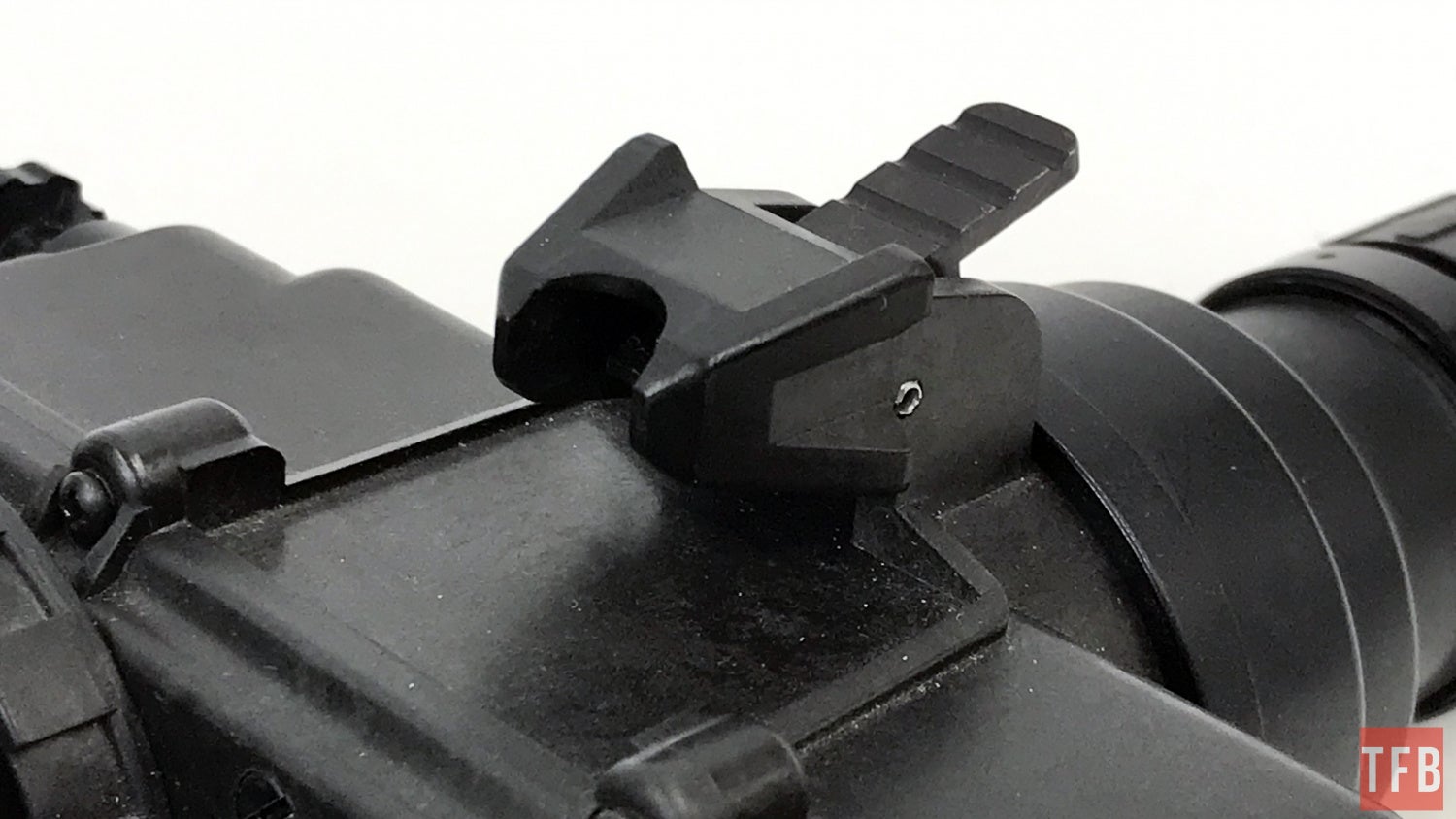
Take a look inside and see how fragile and basic the PVS-7 is. I don’t mean simple in a good way.

Since the PVS-7 is a single tube biocular system, the intensified image from the tube hits a beam splitter and is bounced into a pair of mirrors so the twin images are corrected for orientation and bounced into your eyes. The mirrors are held in by simple friction clips.

The mirrors are easily dislodged if the PVS-7 is hit like if you drop it. Once the mirror is dislodged, you can no longer see in that side.
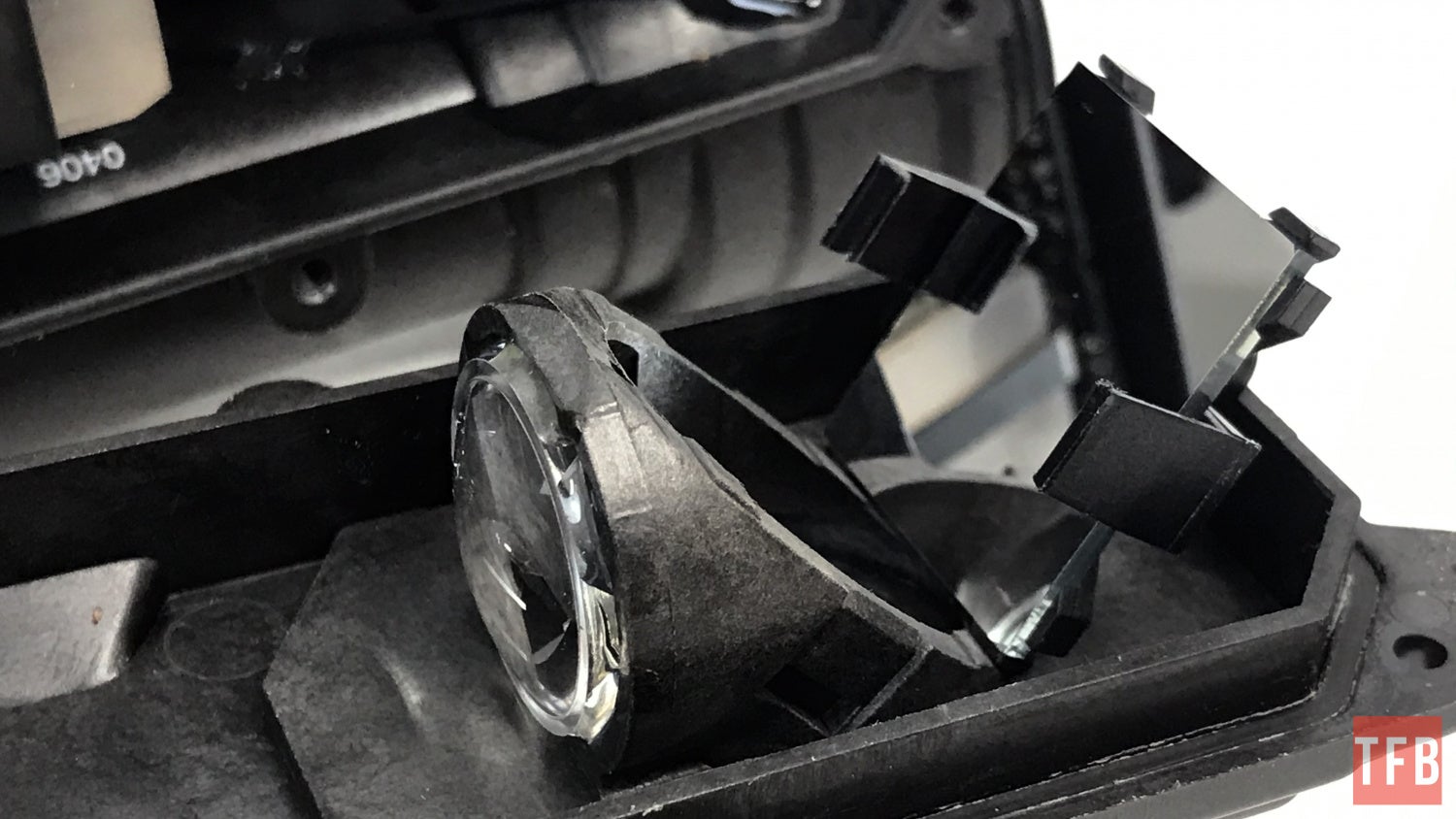
These wires do not bode confidence to me. I have seen more robust wiring in a motorized Nerf blaster. See the circuit board near the top of the housing? That prevents you from bolting a dovetail or replacement bayonet directly to the housing.

The Meager Pros Of The PVS-7
I know I am putting the PVS-7 down but that is not from an emotional point of view. These are just facts of the system’s shortcomings. The one nice thing about the PVS-7 is the cost. Since they are not that desirable you can get them for under $1500. There are some people still clinging to late 90’s early 2000’s era pricing but supply and demand. There is very little demand so price falls out.
Quick and Tool-Less Intensifier Tube Changes
If you need to replace or upgrade the image intensifier tube, you just unscrew the objective lens and the tube pops out. It has a slot that indexes with a tab inside the housing.
The PVS-7 uses a 10130 image intensifier tube and other than the THALES Lucie, I do not know of any other housing that uses these image intensifier tubes. Below you can see a 10160 tube next to the larger 10130 tube. The smaller one is typical of what PVS-14s use minus the manual gain pigtail. They are also used in almost every binocular night vision housing.
Since the 10130 tubes are rather proprietary their cost is relatively low for used. However, this is a double-edged sword. Production and development of the 10130 tubes is not as advanced as the 10160 tubes. So you won’t find high spec filmless white phosphor 10130 tubes for your PVS-7.
Adjustable IPD
One issue I had with the SIMRAD GN1 was the fact that the rear ocular lenses were not adjustable for pupillary distance (the space between your eyes). So if you have fetal alcohol syndrome and your eyes are abnormally further apart than others, or they are closer than average the GN1 is difficult to use. The PVS-7 oculars can slide left and right.



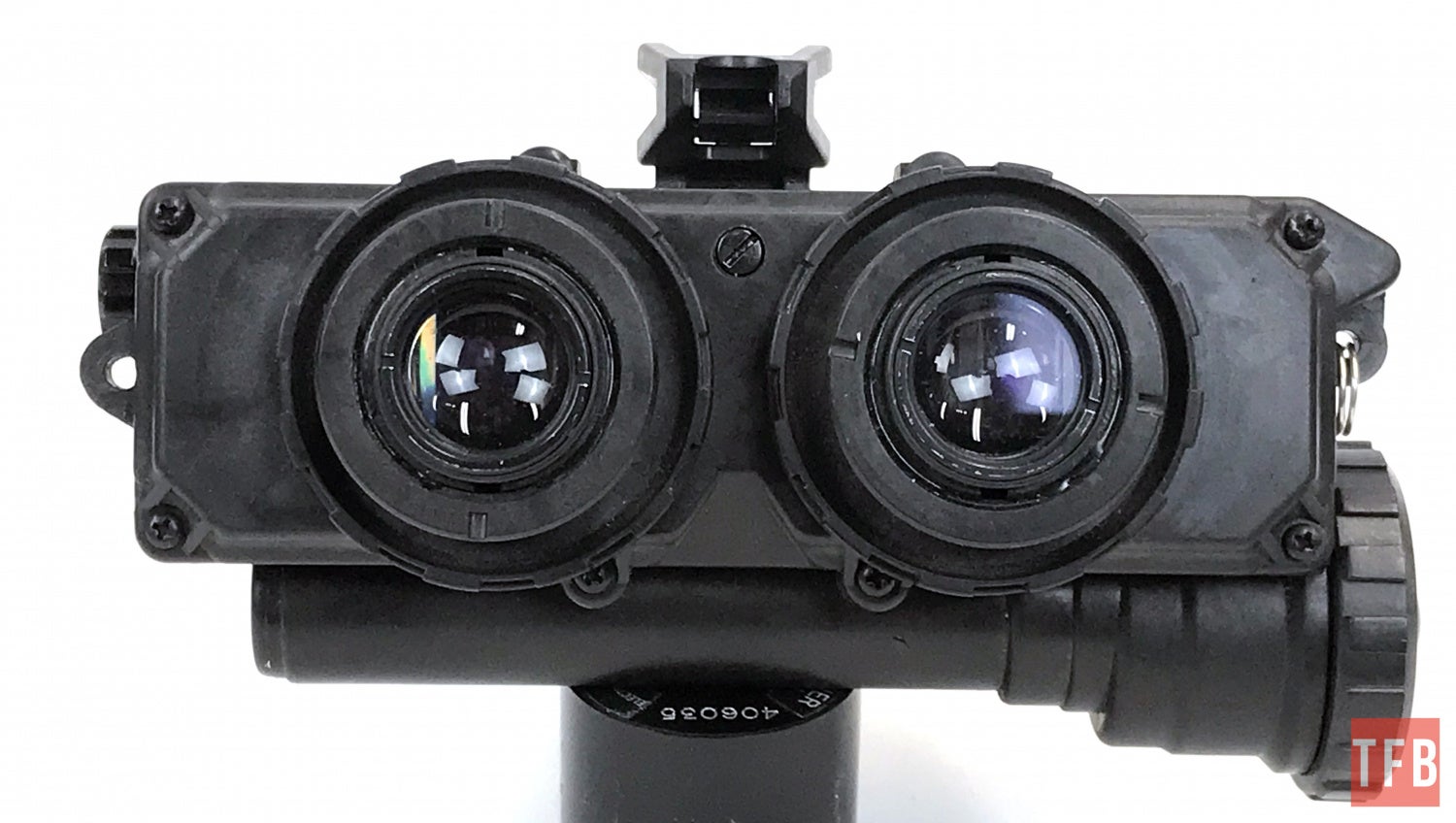
If you want to reenact some clandestine black ops mission from the ’90s, then the PVS-7 is for you!

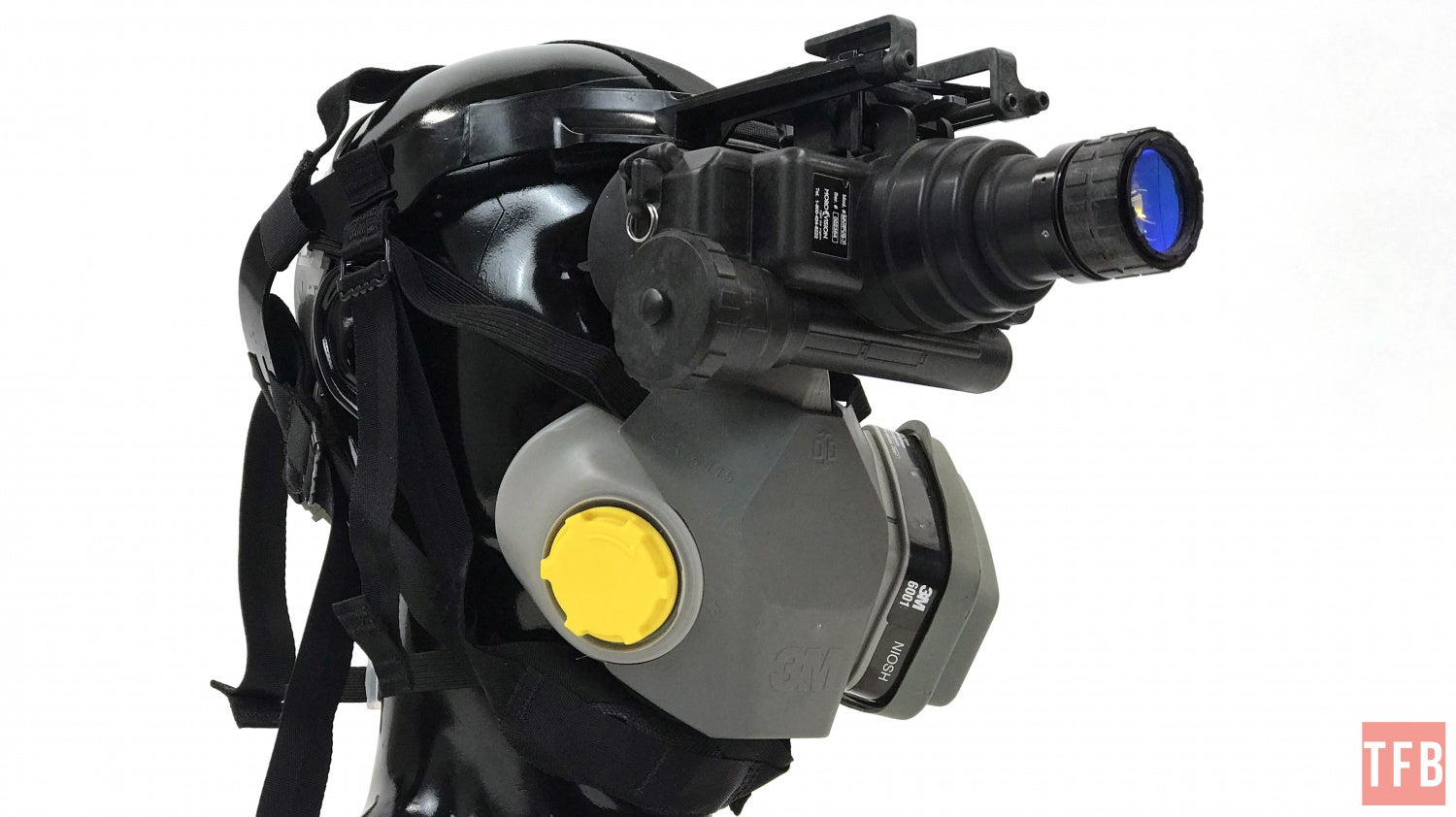

COTI Compatible
You can add thermal fusion to a PVS-7. The proverbial lipstick on a pig. It does work and augments your night observation abilities.


The PVS-7 is fine for kids to use just make sure it has a neck strap in case they drop it.
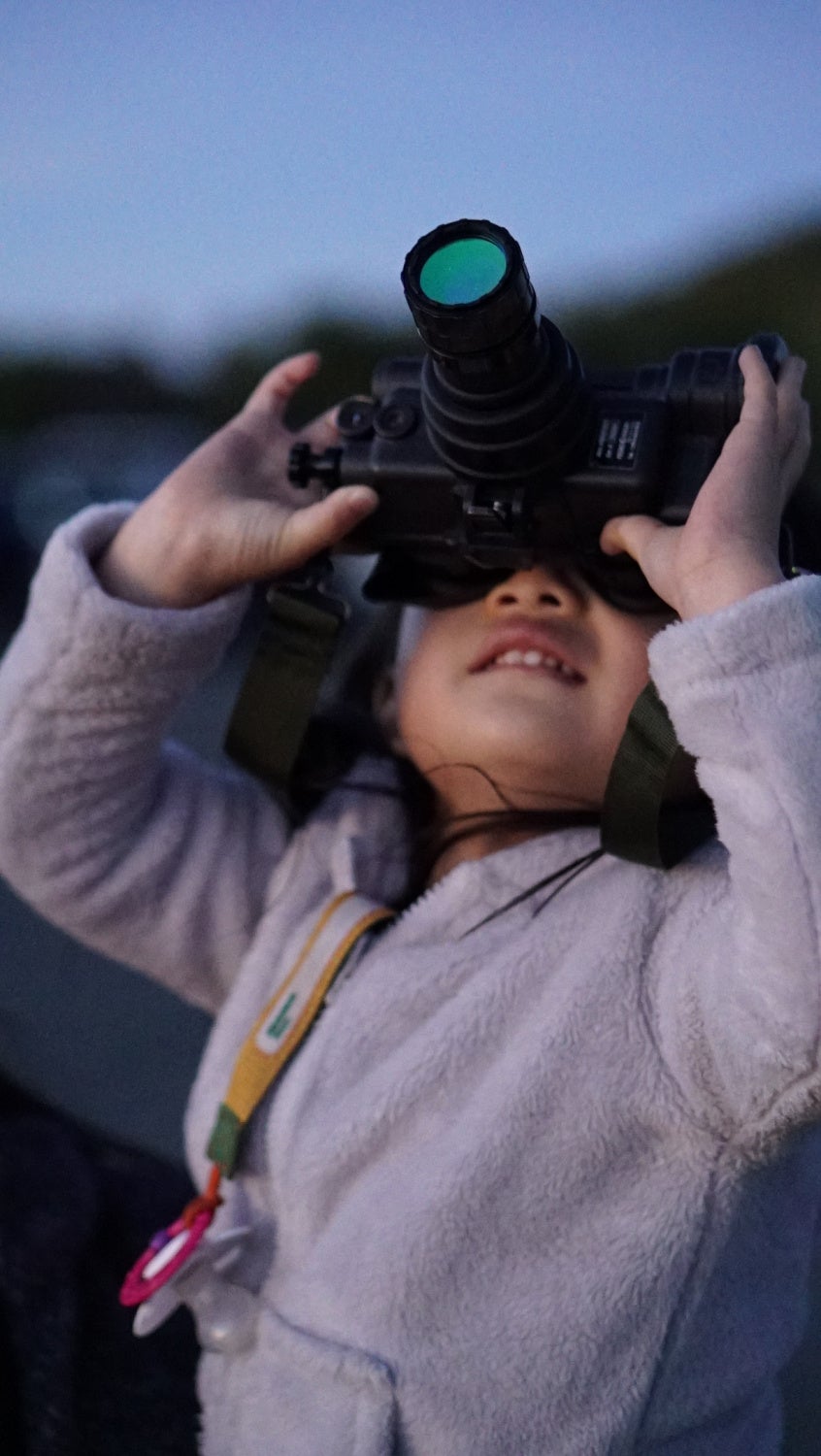
Final Roast Of The PVS-7
While the allure of having a night vision goggle is strong and the price tag of the PVS-7 is tempting, the PVS-7 is like the siren of the sea. It is a trap. They are good to look through for observation purposes but not great for moving, shooting, or driving a vehicle. The lack of depth perception is the biggest problem.
The other problem is the size of the PVS-7 eyepiece. See the photo below. The small circle on the left is the PVS-7. The one on the right is similar to a PVS-14 eyepiece. While the field of view of the image intensifier tube is the same at just 40°, the diameter of the eyepiece means the PVS-7 has to be physically closer to your face to see the entire image. 25mm eyepieces like the PVS-14 can be further away from your eye without compromising the image.

Regarding the price of the PVS-7, if you save just a little bit more, you can get a budget entry-level PVS-14 and it will be a much better experience for you. Save your money, hard earned or gifted by the government and spend it wisely. Just don’t buy a PVS-7.
 Your Privacy Choices
Your Privacy Choices
